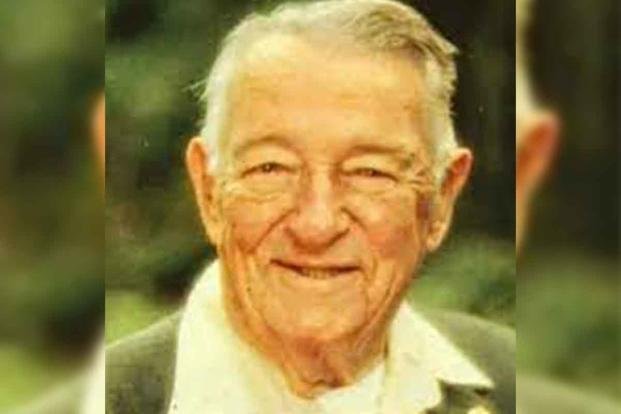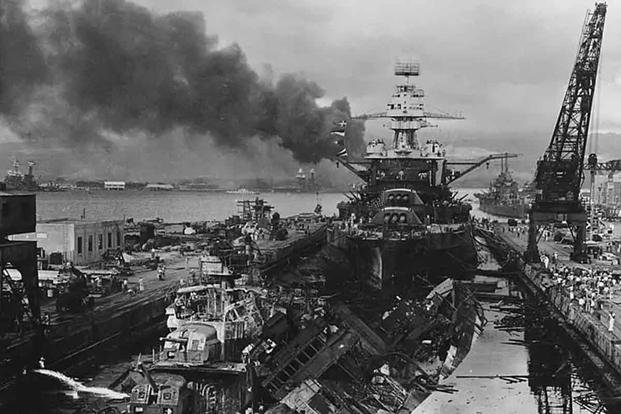In December 1941, the battleship USS Pennsylvania was in drydock at Pearl Harbor on Oahu, Hawaii. It was the lead ship in its class, built before World War I, and was receiving some much-needed maintenance and refits. Suddenly, the dockyard crane began to move erratically. The crane operator, perched some 50 feet above the yard, was trying to catch the attention of the sailors below.
The operator was George Walters, and from his vantage point, he could see the fireballs and plumes of smoke that meant Pearl Harbor was under attack. He was about to show the Japanese that "total war" meant they'd have to fight everyone, not just the U.S. military.

George Walters wasn't a native Hawaiian, but at 37 years old, he'd lived there for almost his entire life and had worked the docks since 1935. He had a wife and family on the island; it was his home, and he wasn't about to sit around and watch the Japanese blow it up. The Pennsylvania and the men aboard it were sitting ducks in the drydock, and his crane was the only protection the battleship had as Japanese Zeros began flying toward it.
Walters maneuvered his crane alongside the drydock to shield the battleship from the incoming fighters. His crane blocking their path, Japanese fighters were unable to make their planned approaches. He then began to swing the 50-ton crane and its boom like a weapon in an attempt to swat the enemy aircraft out of the sky like gnats.
While Walters may have failed to make contact with even a single Japanese Zero, his attempts were put to good use by the sailors below. At first, they believed Walters and his crane were getting in the way of their ability to return fire. Then, they realized that, from Walters' perch, he could see from which direction the next group of fighters was attacking, prompting the sailors to use the movement of the crane to track their targets.
It's believed Walters' crane helped sailors from the Pennsylvania shoot down at least eight to 10 attacking fighters. The Japanese pilots didn't just let it happen, though. They attempted to drop a 500-pound bomb at the base of the crane, but Walters dodged with the slow-moving vehicle just in time to avoid taking the brunt of the explosion. The crane was damaged, and Walters was stunned. A quick-thinking naval officer climbed up and retrieved their guardian crane-gel before he fell to the ground.

Walters woke up under medical care after the attack had ended. His crane was heavily damaged, but he was told its cables had contributed to swatting down one enemy Zero. The Pennsylvania had taken relatively light damage in the attack, with the loss of 15 sailors, another 14 missing and 38 wounded. Repairs began immediately, and the battleship was seaworthy five days later.
Walters recovered from his wounds and continued working his crane at Pearl Harbor until 1950. He retired from the shipyard as a supply technician in 1966. He died at age 95 in 1999 and is buried on Oahu.
-- Blake Stilwell can be reached at blake.stilwell@military.com. He can also be found on Facebook, X, or on LinkedIn.
Want to Learn More About Military Life?
Whether you're thinking of joining the military, looking for post-military careers or keeping up with military life and benefits, Military.com has you covered. Subscribe to Military.com to have military news, updates and resources delivered directly to your inbox.
















